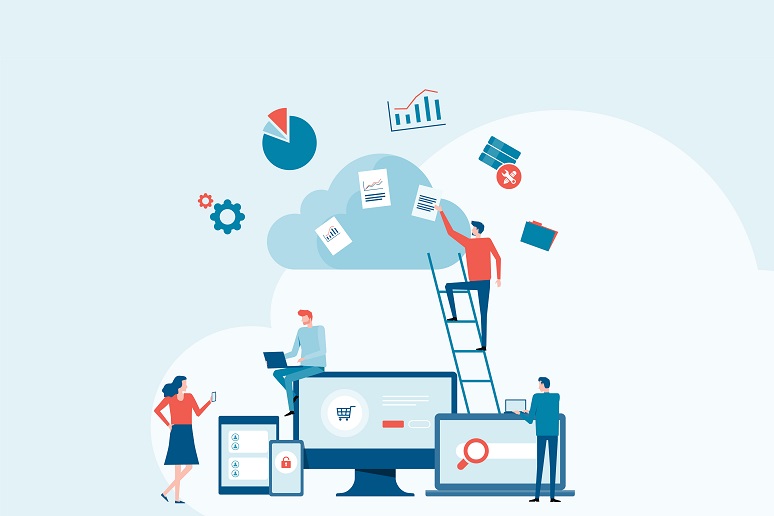It’s no secret that the contact center as a service (CCaaS) space has been booming during the pandemic. As organizations were forced to send contact center agents home, it became very evident that moving quickly to the cloud was the best way to guarantee business continuity. I have attended several CCaaS vendor briefings in the last 18 months and they all boast of record growth in the CCaaS space, with little sign of things slowing down anytime soon.
There have been countless stories of organizations of all sizes doing what seems impossible – moving entire contact centers to the cloud in a matter of weeks or even days. All of this was done with the initial goal of supporting remote agents working at home. While at one time this was seen as a short-term measure, as the pandemic wore on and the effectiveness of remote workers was proven, the idea of keeping a large portion of agents remote for many organizations is here to stay.
For those that have finally moved to the cloud, the key question becomes “now what?”
Despite the marketing rhetoric around the virtues of moving to the cloud, the strategic benefits aren’t realized by simply buying CCaaS. The real benefits, the kind of things that move the meter in terms of dollars and key performance indicators (KPIs), are dependent on what you do once you’ve made the move.
Below are four steps to take once you’ve completed your migration to CCaaS to help drive real digital transformation and improve customer experience.
Step One: Identify Needs
The first and most important step is to understand the challenges that are not being adequately addressed by the current technologies and processes. Start by asking the kind of questions that focus on the processes and the realities of the customer and employee experience, including:
- What are the pain points for customers?
- What are the pain points for agents?
- Where are the biggest inefficiencies?
- What are the KPIs that need the most attention?
- Where is the biggest opportunity to move the meter on these?
Bringing in an independent consultant may be a good idea for executing on this step. Having someone from the outside that is familiar with both customer processes and the available technologies might be able to drive this process in a more focused and effective way than trying to leverage internal resources.
Step Two: Leverage In-Suite CCaaS Tools
Once you’ve identified the areas that need to be addressed, the first place to look for potential solutions is within the CCaaS suite you’ve purchased. As these applications have shifted into platforms over the last few years, the breadth of capabilities has increased dramatically.
One of the biggest benefits of being in the cloud is the ability to leverage artificial intelligence (AI). For many CCaaS providers, AI is being used throughout the CCaaS suite. Using in-suite AI is an easy and affordable way improve many metrics in the contact center, by improved routing, agent assistance, sentiment analysis, chatbots, and more.
Since those features are now part of the CCaaS suite, there is nothing else to buy except possibly an increased subscription cost. Additionally, there are no integrations to manage, and native integration allows for easy adoption.
It is also important to note that applications that were once only viable for large organizations, such as workforce management, are now available to even small contact centers. Expectations are set by larger companies that do leverage these technologies to provide for an excellent customer experience. Just because you don’t have thousands of agents doesn’t mean that the same tasks don’t apply to you. Smaller contact centers may need to adopt some of these same customer experience tools, which are now available at a reasonable cost as part of their CCaaS suite. In some cases, the features may already be included in purchased licenses.
Step Three: Integrate with Key Third Party Business Applications
Some needs may not be properly addressed by your current CCaaS platform, so you’ll want third-party applications to integrate with. Maybe you’ve got a specific vertical market need, or you want a twist on a feature not available, or you have regulatory requirements that call for specialized applications. The good news is, now that you are in the cloud, integrating with third-party cloud applications is much easier. Tight integration between the contact center and key business applications has significant benefits, including faster call resolutions, improved customer satisfaction, and more intelligent analytics While CRM is usually the first application to integrate with, be willing to expand your vision to other applications throughout the business.
Step Four: Leverage CPaaS to Automate Communications Processes
Many of the in-suite and third-party applications identified will have communications processes that may or may not be supported. This is where communications platform as a service (CPaaS) comes in.
For example, you’ve noticed a large percentage of chats and calls related to shipping status. Using CPaaS, you could define specific shipping criteria in your order management system that will trigger a proactive SMS text to customers alerting them of their order’s shipping , thus freeing agents for higher value interactions, such as new sales or retention calls. As a bonus, the customer experience is improved thanks to proactive notifications. One of the great things about CPaaS is it allows you to fill in the communications gaps that exist between these different applications and customize solutions to meet the specific needs of each client. CPaaS can also be used outside of the contact center for a myriad of purposes, from emergency call handling to mass notifications, possibly heading off the need for customers to even need to reach an agent.
When I was a consultant, I always liked to look at my client’s key problem areas under the “perfect world lens.” In a perfect world, what would this process or customer engagement look like? With the accelerated adoption of CCaaS, integrations/APIs, and CPaaS, the “perfect world” may be a lot closer than you think.










